6 Of The Healthiest Japanese Snacks For Your Kids And You
Boost Your Energy in the New Year With These Traditional Foods
Add some adventure to your snack time as you teach your child good food habits through culinary courage.
Snacking used to have a bad name, but that changed with the emergence a few years ago of the concept of healthy snacking. Under that idea, eating a small portion of food between meals that is high in fiber and protein can boost your energy and overall nutritional intake and help you avoid the overeating that results from hunger attacks. It aims for intentional eating rather than chowing down on empty calories.
Here we fill you in on some particularly Japanese foods that you can try with your kids to add a bit of cultural adventure to your snack time. After all, culinary courage is an important part of teaching your child wise food habits – you just don’t know how good something is until you try it.
We’ve steered well away from processed foods to focus on some traditional ingredients in Japan’s venerable and longevity-boosting diet.
1. Almond fish
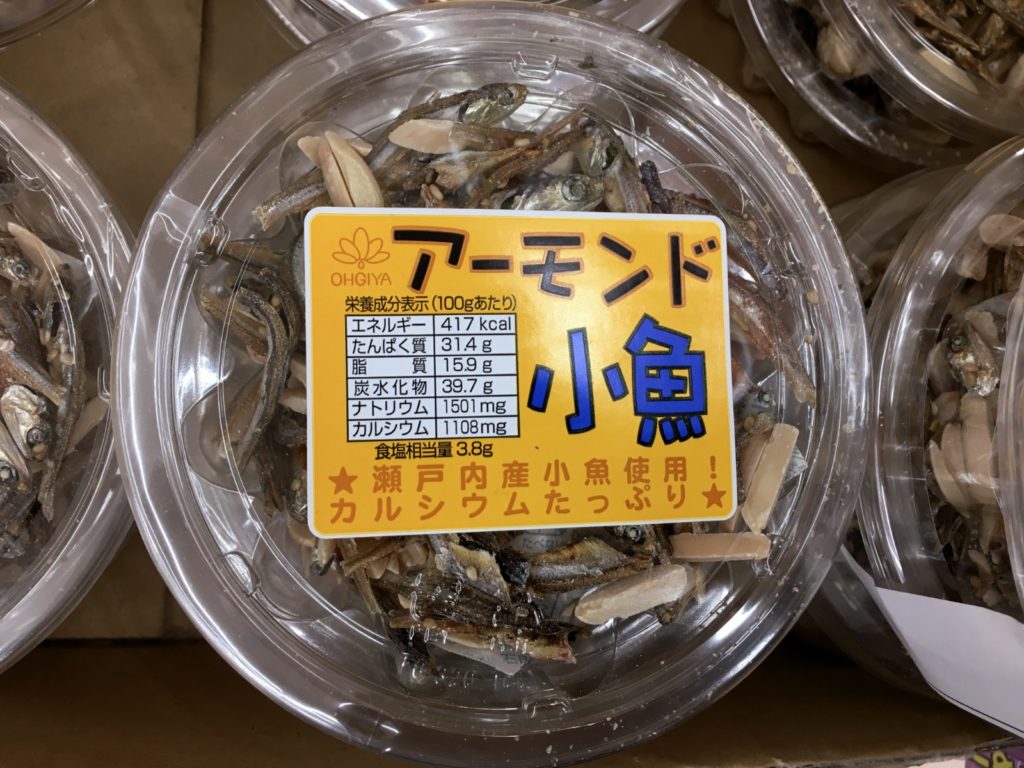
Nuts are probably the most popular healthy snack in Western countries, and you can easily find them here too. But for a bit of local flavor, and an extra burst of calcium, try almond fish. It’s a crunchy combination of cut almonds and small, dried – usually slightly sweetened – sardines.
Manufacturer Kyoritsu Foods says a Hiroshima fisheries company created this snack in the mid-1980s to boost children’s calcium intake after some kids were breaking bones when practicing the vaulting horse in school sports classes. Almond fish spread throughout Japan after it was introduced to school kyushoku or catered lunches.
You may also see snack packs of just the little fishies which will contain fewer calories than the almonds.
2. Soybeans
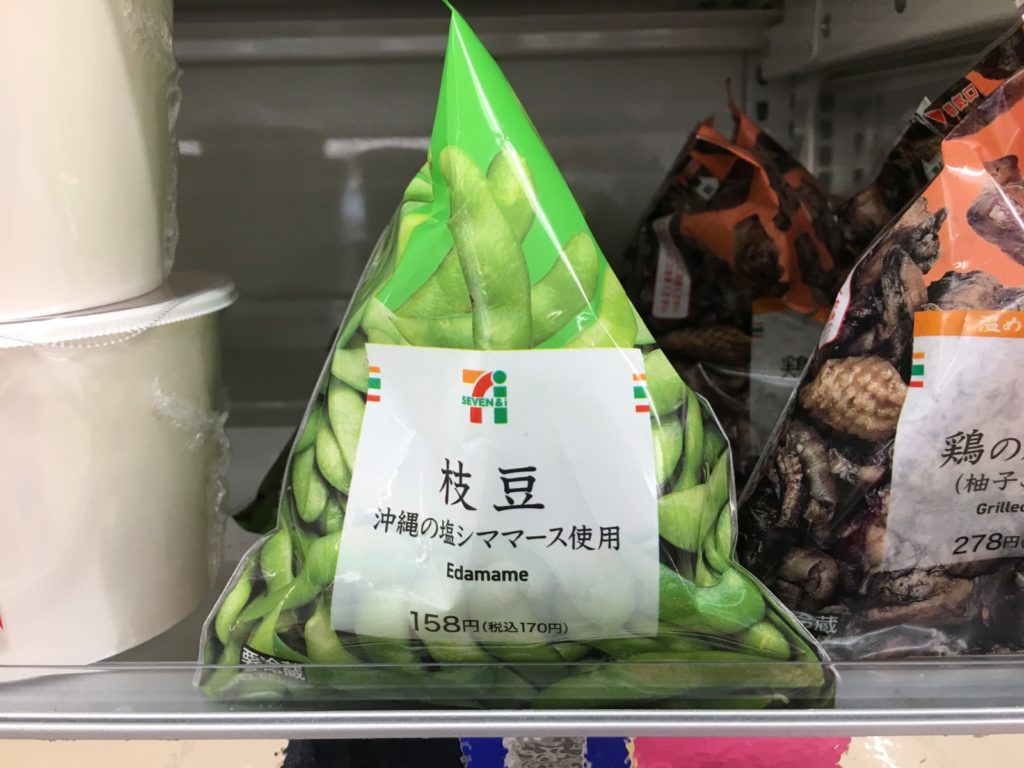
Edamame from 7-Eleven.
Soybeans are one of the best sources of plant-based protein, are high in fiber but low in carbohydrates. They are used to make tofu, and are a backbone of Japanese cuisine and culture.
Edamame (枝豆): These are immature soybeans, usually still in their pods. Edamame are a quintessential summer snack here – particularly due to their compatibility with beer – but boiled, salted edamame are available all year round in convenience stores and in the frozen section of supermarkets. In supermarkets, you might see them sold as cha-mame or dadacha-mame, which is a tastier variety of edamame.
Having to pop these out of their pods helps slow down fast eaters and will help boost your child’s dexterity. The easiest way to get them into your mouth is to place the pod to your lips and with fingers of each hand push your target bean from behind to shoot it straight down the hatch.
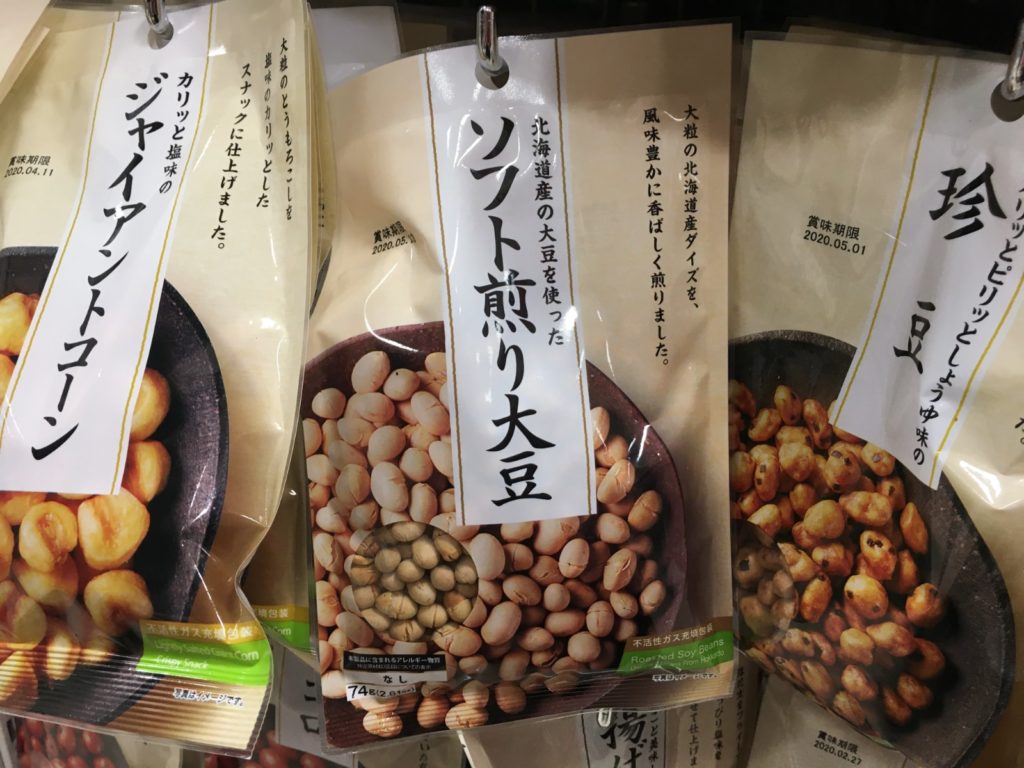
Roasted soybeans at the convenience store.
Roasted soybeans, or iri-daizu (煎り大豆): These are the soybeans that get thrown around in the Setsubun Festival in early February. You may also know them as soy nuts.
These are a great crunchy snack with a satisfying nutty taste. You will see these in the shops each January, also in various flavors, such as a sweetened kind, or soy-flavored or with seaweed added. But the plain (su, 素) type is yummy enough that you don’t need to add that sugar and salt.
At other times of the year, it can be hard to find roasted soybeans. Some ¥100 shops stock them all year round, but you can always roast your own. You can usually find dried soybeans in supermarkets at any time.
Be aware that, like popcorn, roasted soybeans can be a choking hazard for children younger than four because they don’t have their back molars yet to chew them properly. Soybeans are also an allergen.
3. Seaweed
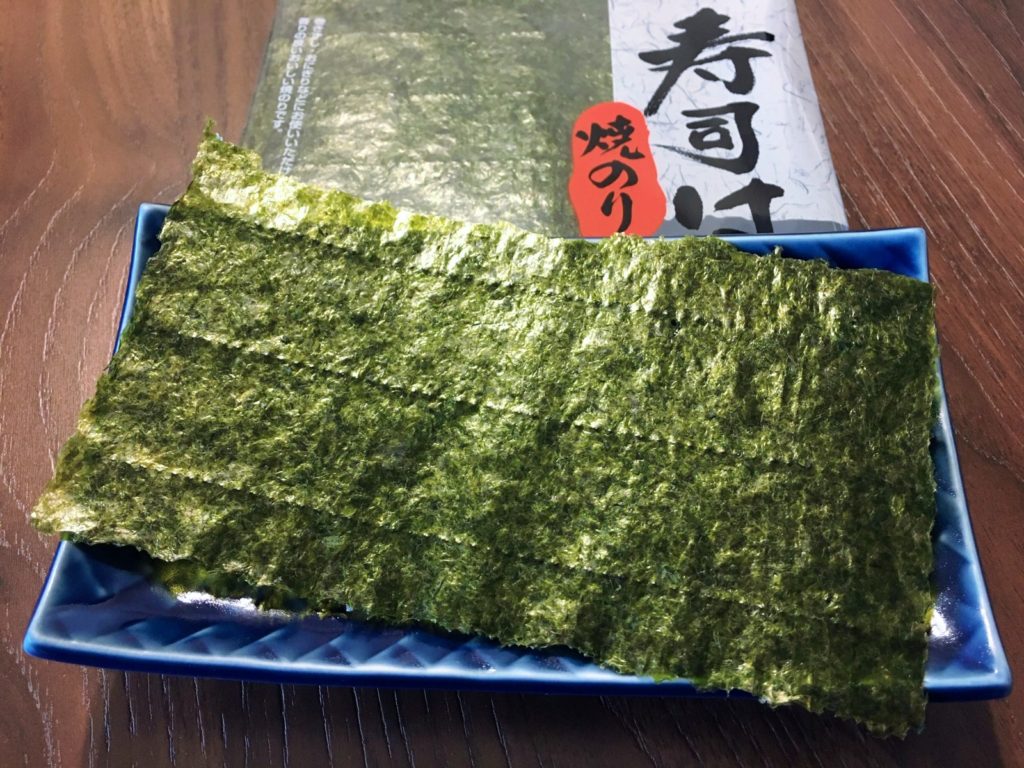
Seaweed laver sheets.
The Japanese archipelago is blessed with many marine products, and so is the diet. Among them, seaweed makes a particularly satisfying snack. It is rich in glutamate, an amino acid that is thought to give it a savory, umami taste, and a high fiber content makes it filling, even though it is low in calories. It is also stacked with antioxidants and various vitamins and minerals.
Seaweed comes in a number of forms and textures.
Nori: This is the very dark green laver that is used in wrapped sushi. The basic type is yaki-nori (焼のり、焼海苔), which is just the dried laver sheets themselves. Among Japanese, flavored ajitsuke-nori (味付け海苔) is probably the most popular type, but it is often a very strong dose of sweetened and salty soy sauce that really isn’t needed.
There are different grades of nori, but the cheapest kind is fine. My daughters grew up chomping on cut sheets of this. To bulk it up a bit, you can add a little rice, and some black sesame seeds are a tasty and healthy further addition. The rice will help prevent small children from getting a dense ball of seaweed stuck in their throats.
More recently, my daughters and I have become cultural traitors and chow down on Korean-style seaweed, which is dried laver thinly coated with corn oil, sesame oil, and salt. It’s not as healthy but is crazy yummy.
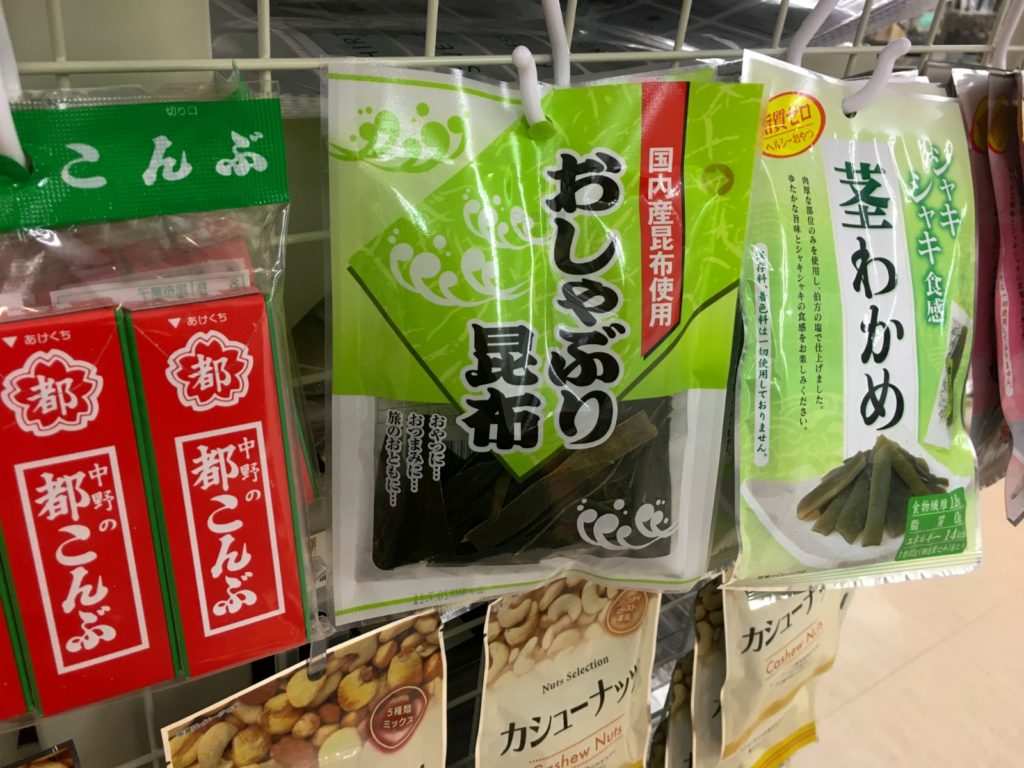
Oshaburi seawood.
Konbu: This is a thick kelp that is commonly used to make stock because it is rich in umami goodness. Its lasting flavor and firm texture mean you can keep happily chewing on this for some time, which is exactly what older generations used to do. That’s why it is sometimes called oshaburi konbu – “oshaburi” meaning a pacifier, or baby’s dummy.
In the early 1900s konbu was made into a commercial snack food with the creation of miyako konbu (都こんぶ), which some people describe as Japan’s first “chewing gum.” Vinegar is added to the kelp to soften it and to flavor it, with sugar, sweeteners and other flavors also added.
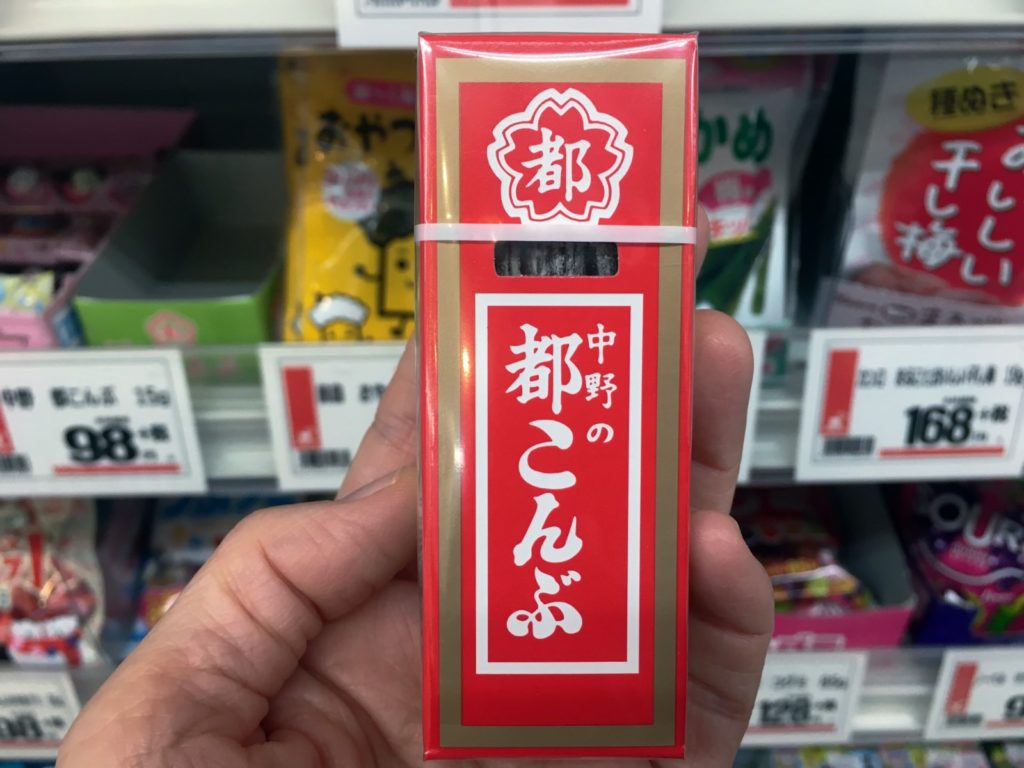
Miyako konbu.
Wakame: This is a thin, soft seaweed that is most commonly served in miso soup and salads. It has also been made into snack foods. Probably the most common is crispy wakame with sesame, or pari-pari goma wakame (パリパリごまわかめ). Sesame oil, salt, sugars, and flavors are added to the crunchy wakame.
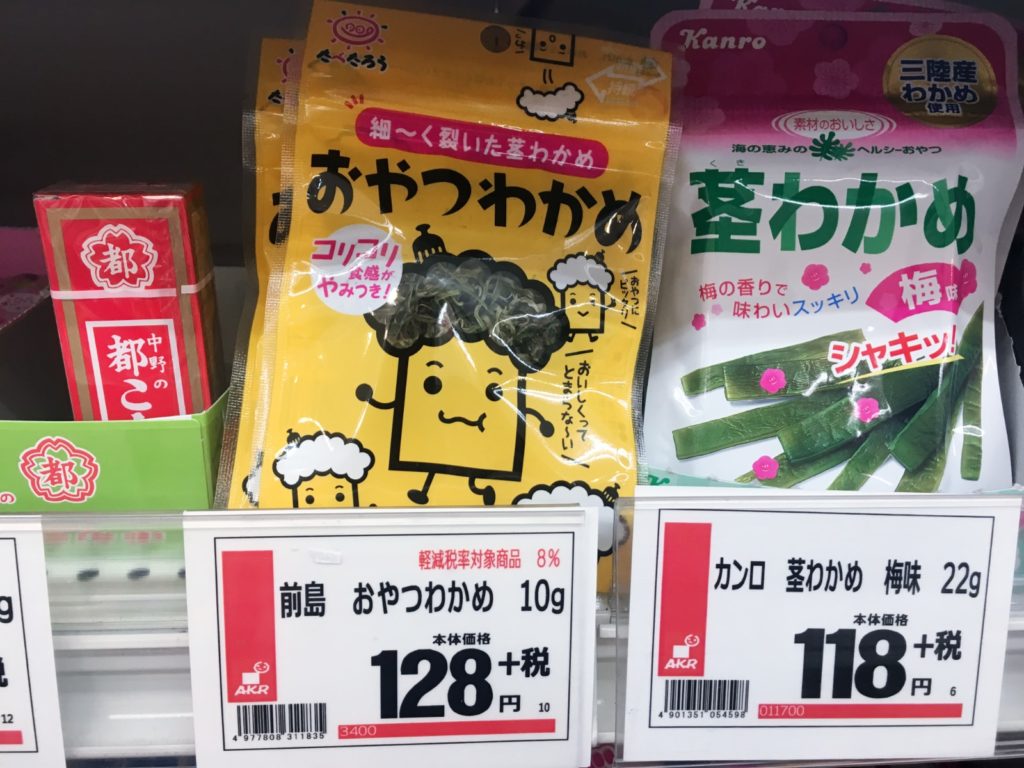
Snack pack wakame.
Another common product is kuki wakame. This is the thicker, stem section of the wakame, which has a leathery texture and is also seasoned with vinegar and sweetened.
Wakame and konbu tend to maintain their ocean upbringing in their taste, making them rather an acquired taste as snacks. It’s worth trying them at least once for their texture, which is a key aspect of Japanese cuisine.
Pregnant women may want to limit their seaweed intake to avoid overconsumption of iodine.
4. Sweet potato
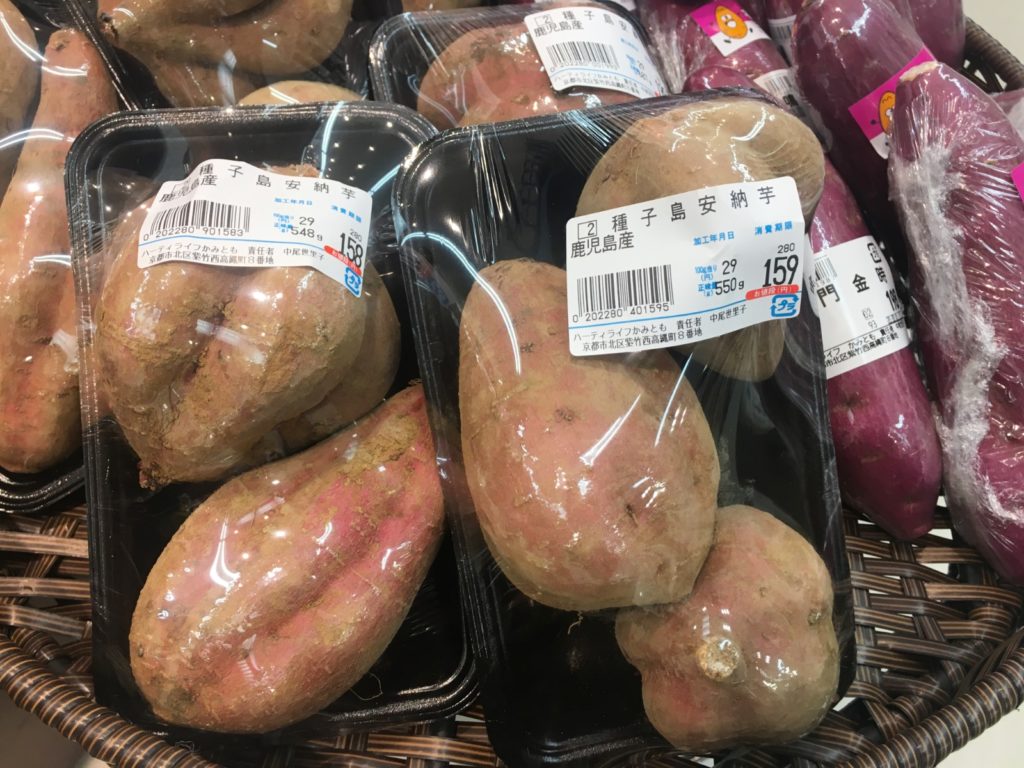
Sweet potato at the supermarket.
Sweet potato has been in Japan since around 1600 and has played an important role in helping the nation cope with famine. After droughts in the early 1700s caused repeated failures of rice crops, sweet potato was chosen as an alternative staple food and introduced into the Kanto region around Tokyo. Those crops helped greatly reduce deaths during consequent rice harvest failures.
Sweet potatoes are high in fiber, especially if you also eat the skin. They can, therefore, help move things along if you’ve got a bit of constipation. The fiber and complex carbohydrates in sweet potatoes can help you feel full longer. They are rich in antioxidants, contain vitamin C and minerals, and are packed with vitamin A, which is good for eyes.
The best way to eat sweet potatoes in Japan is as yaki-imo (焼き芋), a slow-baked spud. Particularly in winter, these are easy to buy still hot in a roaster at convenience stores and some supermarkets. In season they are even sold from trucks that play the yaki-imo chant to let you know they are nearby.
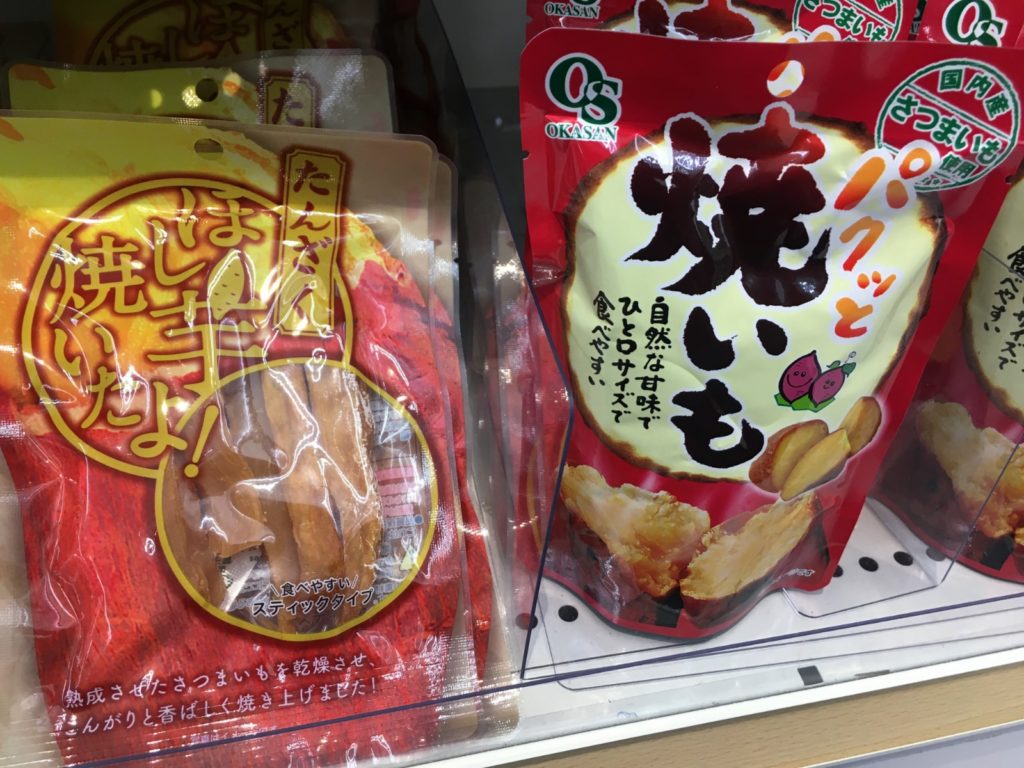
Sweet potato comes in handy small packs, too.
You can find packaged, dried, soft sweet potato strips at convenience stores and supermarkets. Crunchy, round sweet potato chips are also available as a packaged snack. Sugar (さとう, 砂糖) is often added to these packaged types, though, so check the ingredients listing (げんざいりょうめい, 原材料名) for that.
If you cook sweet potato yourself, do it at a low temperature to heighten the sweetness.
5. Konnyaku
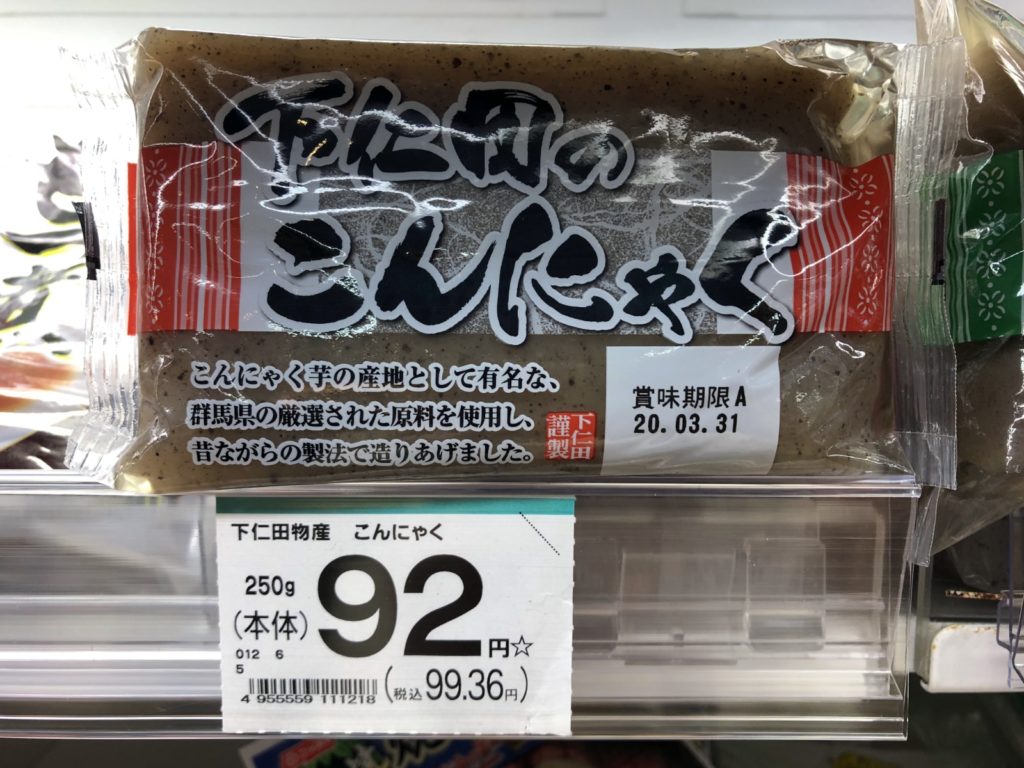
Konnyaku is not the most appealing to look at.
Konnyaku is made from the tuber of the devil’s tongue plant and is around 97 percent water, with the remainder mostly fiber. Some hail it as near zero-calorie diet food, while others question whether it’s near-zero nutrition can be called healthy. There are two factors that both camps agree on: the fiber can help clean out your small intestine, and it can be a deadly choking hazard.
Konnyaku is most commonly served in savory dishes as stewed blocks of rather unappetizing-looking, hard jelly colored a dark mottled grey. It also comes in other colors and shapes, including the more attractive, white shirataki (しらたき) noodles. Both of these are used in the soupy oden (おでん) dish, which is popular in winter and often awaits customers on convenience store counters.
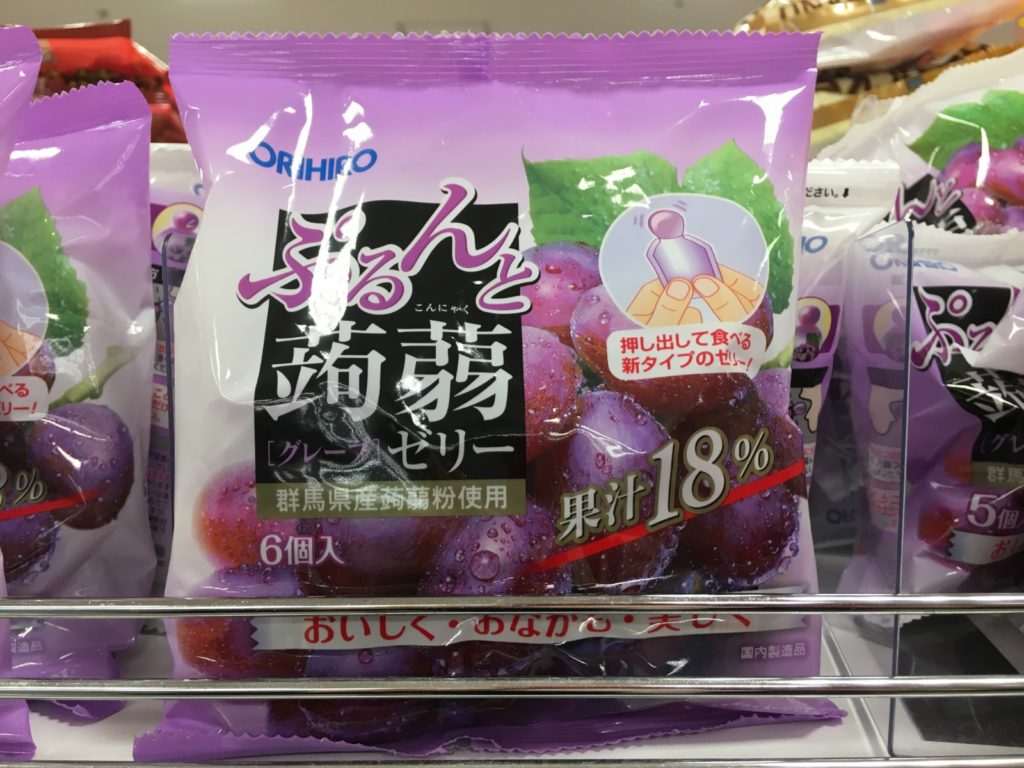
Grape-flavored konnyaku jelly.
More recently, konnyaku has been made into sweet jelly products. Unlike regular jelly, konnyaku doesn’t melt in the mouth and needs to be thoroughly chewed. Some countries have banned konnyaku jelly due to deaths caused by choking on it. Following one such death in Japan, manufacturers added warnings and changed their packaging. Konnyaku jelly maker Orihiro’s sachet series, for example, releases only a narrow line of the jelly from a one-centimeter-wide opening.
Konnyaku has also been made into savory chips that you can find at Natural Lawson stores. With a consistency like that of smoked meat, some Japanese nursery schools give them to children for snacks to help stimulate their biting and jaw strength.
Eating konnyaku with older children would be a good learning experience (since no one ever learned much from avoidance). Make sure they know they have to chew it well.
6. Miino
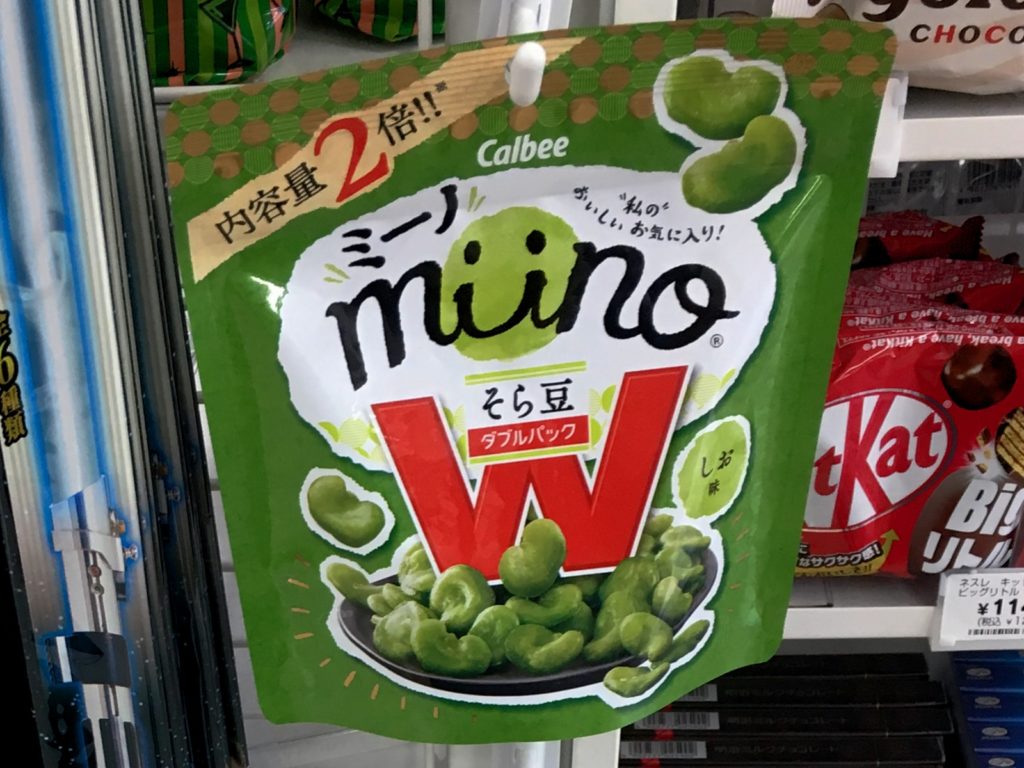
Miino soramame for kids.
Japanese snack company Calbee released Miino a few years ago amid the rise of the healthy snacking trend. The original product was sora-mame (そら豆), broad beans or fava beans, deep-fried in vegetable oil and salted. That’s all. Snackers have given it a big nod and the range has expanded to include similarly prepared edamame, kuromame (black beans), fiber-rich burdock root (gobo, ごぼう) and more. Miino is sold in convenience stores.
What healthy Japanese snacks do you enjoy? Leave us a comment below!












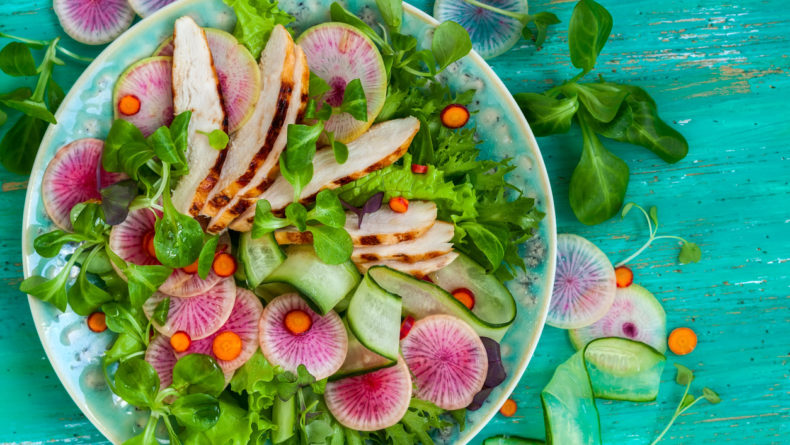

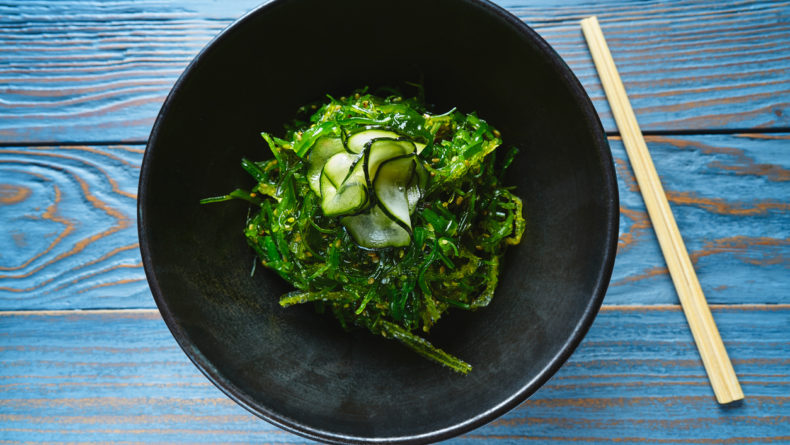
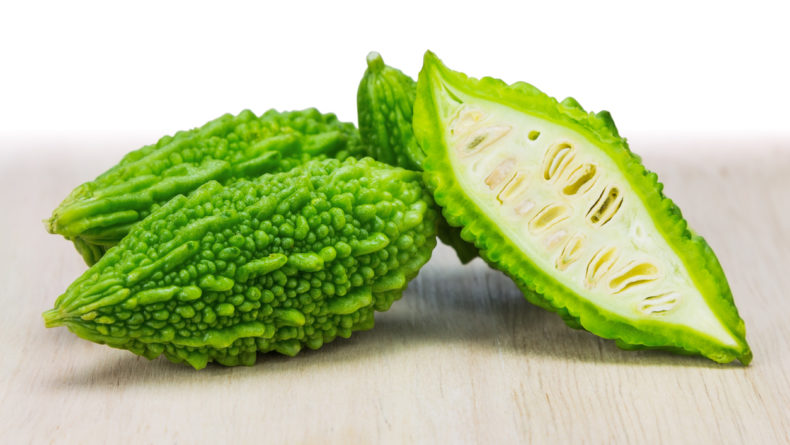
Leave a Reply